COVID-19
"Even in the midst of chattel enslavement, when Black people were in the hold of slave ships, we found community, we found love, we found hope, we found each other."—Dr. Kevin Lawrence Henry Jr.
COVID-19
While conversations around COVID-19 may have subsided, the impact of the pandemic continues to be felt in many areas - especially for students of color. Scholar and public education advocate Dr. Kevin Lawrence Henry Jr. has been working to improve educational outcomes for underserved students and is here to share his experiences and recommendations.
GUEST
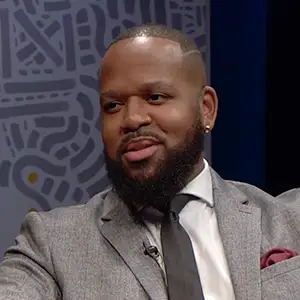
Dr. Kevin Lawrence Henry Jr.
Dr. Kevin Lawrence Henry, Jr. is an Assistant Professor of Educational Leadership and Policy Analysis at the University of Wisconsin-Madison. His research investigates the racialized lived realities of charter schools and school choice policy and practice; the persistence of anti-Blackness in education; and culturally relevant and restorative justice approaches in education.
TRANSCRIPT
[orchestral music]
Announcer: The following program is a PBS Wisconsin Original Production.
– Angela Fitzgerald: While conversations around COVID-19 may have subsided, the impact of the pandemic continues to be felt in many areas, especially the public education system.
District leaders, teachers, families, communities, and students are still adjusting to how the pandemic elevated existing disparities and shed new light on educational inequality.
Let’s find out why race matters when it comes to COVID-19 and educational disparities.
The COVID-19 pandemic elevated economic and racial disparities that exist nationwide, including within our public schools.
The US Department of Education Office of Civil Rights released a report in 2021, summarizing the impact of the pandemic on American students.
These barriers included lack of access to technology, mental health, and other school-based services and supports, as well as widening disparities related to students’ academic growth, and specifically in core areas such as reading and math.
Education disparities were present before the pandemic.
In the 2019 COWS report, “Race in the Heartland,” Wisconsin nationally ranked low in the nation on a number of racial disparity indicators, including being second worst for out-of-school suspensions and worst in the nation for eighth-grade-math scores.
Wisconsin State test scores from 2020 through 2021 school year confirmed the persistence of education disparities.
For example, on math and language arts tests for grades three through eight, fewer than half of Wisconsin students were deemed proficient in 2022, a drop of about 10% of students deemed proficient in 2019.
In response to the impact of COVID-19 on the learning outcomes of students in public education, nearly 200 billion of Emergency and Secondary School Emergency Relief, or ESSER funding, was made available to public schools to spend on COVID-19-related needs.
Of that, among 22 billion was dedicated specifically to addressing learning loss using evidence-based interventions focused on the disproportionate impact of COVID-19 on underrepresented student subgroups.
Scholar and public education advocates join us to discuss why race matters when it comes to COVID-19 and education.
How are you doing today, Dr. Henry?
Dr. Kevin Lawrence Henry, Jr.: I’m doing delightfully well.
Thank you so much for asking, Angela.
How are you?
– I’m good.
– Great, great.
– Thank you so much for joining us today.
– My pleasure.
– So, you, I feel like, wear a couple of different titles.
– Okay.
– And there’s probably a lot of things that we could jump into, but I would like you to get us started in terms of how would you like to introduce yourself.
What is the way that you simply tell people about what you do?
– I’m a public servant.
– Angela: Okay.
– And I’m an educator.
In other words, I spend most of my time as a researcher and professor at the University of Wisconsin- Madison.
And I’m in the Department of Educational Leadership and Policy Analysis.
And so, I spend my time researching and writing about how race operates in education, most specifically thinking about anti-Blackness and how people try to create systems that are equitable and humanizing and freeing, and all the things that we really want for our students and for our teachers.
And so, I spend a generous amount of my time thinking about that.
That’s what I do.
Beyond that, trying to find time to rest, those are the– – Yes.
– Those are the things that I do.
– What got you into that line of work?
– Ah, anger, frustration.
Most of my work has principally been interested in thinking about the reconstruction of education in post-Katrina New Orleans.
And I’m originally from New Orleans.
That’s where I grew up, that’s where I went to high school, and much of my life had been spent in New Orleans.
And it was in 2005, when Hurricane Katrina hit, that totally decimated the city and reoriented the city to be at all a hundred percent charter school district, which is the first in the nation.
And I spent a lot of time working in schools teaching.
And what I found was that I was becoming increasingly frustrated with what I saw as the change.
The student suspension, expulsion rates were out the, you know, wazoo, so to speak.
We had very little traction in terms of academic performance, and then, to say nothing of the displacement of Black people across the city who were never able to return, and an amplified loss of Black teachers following Hurricane Katrina.
And so that’s what got me kind of interested in some of the questions that I asked and some of the things that I hope would be necessary for our changing of schools.
And so, it was frustration.
I wanted to make a difference, a larger difference.
And so, I thought becoming a university professor could be part of that project to try to create, in the words of James Baldwin, a more human dwelling place of this world.
– Oh, absolutely.
– Yes, yes.
– And I’m wondering about the context of New Orleans in post-Hurricane Katrina.
How is that translated to Wisconsin?
Because we are not absent of our own educational disparities here.
So how is your work connected to what do you see in the state?
– Yes, so, you know, it’s quite unfortunate that some of the challenges that we see, for instance, in pre-Katrina New Orleans, post-Katrina New Orleans, and in Wisconsin, is something that is consistent across the United States.
So the challenge that we see before us around racial disparities are not unique to location, though there are specific ideas and specific ways that that shows itself.
But when we think about how race and how inequality manifests itself, shows itself, in schools, we see some very similar things.
As I mentioned, discipline disparities.
So, we see that students of color, particularly Black and brown students, are disproportionately suspended and expelled compared to their white counterparts.
We see that there are fewer and fewer teachers of color, right?
In a place like Wisconsin, where Black students are about 9% of the student body population.
The uniqueness of Wisconsin is that, you know, for good and for ill, we do have some significant disparities that in some ways makes us one of the kind of worst states to educate Black students in the nation.
And what we have in Wisconsin is one of the kind of largest choice systems as well in the United States.
So, while we have no 100% charter school district, the ever-increasing number of charter schools and voucher programs and homeschooling across the state of Wisconsin has certainly intensified and definitely intensified since the advent of COVID.
So we’ve got some overlap and similarities that I think are really central to thinking about the history of the state, but also the future of the state.
– Right, so I actually wanted to pause there for a second because there are things we’re seeing post-COVID that aren’t new.
We saw them pre-COVID.
They’re just being elevated in a way that COVID shone light on like, “Hey, we have some glaring disparities that this pandemic is not allowing us to address the same ways.”
And then, coming out of the pandemic, what are the needs continuing and what might be the more newly emerging or heightened needs that we should be addressing?
So, I’m curious what your thoughts are about that.
And I wanted to put a pin in the choice piece because I’m also curious what that means, right?
Because if we’re thinking about our community and how the public education system, how it maybe, has not historically… Well, not maybe.
It has not historically worked for our community.
So, I can see a perspective, that choice, us opting out of what we have been offered, and having choices, how is that a bad thing?
So, curious what your thoughts are around that so we can just kind of have a framework to think about choice that balances it out, but also having the COVID-19 perspective in place, as well.
– So, I’ll start with the last question and I’ll work my way to COVID.
Part of my gig is to, to think historically about the questions that I’m interested in in the present.
So, you’re absolutely spot on.
When we think historically about schools and we think historically about Black education, since the advent of the public schools, Black people had to try to create, reinvent, reimagine schools so that it fulfills a purpose larger than servitude.
And that has been longstanding, so much so, that we know that education literacy was punishable by death for enslaved Africans.
And so, yes, public education, the idea of education writ large, is so central to the history of Black people, as well as so central to how we envision our future and the sacrifices that we make in the present in order to have that future.
And I think, as we consider school choice, it’s important to think about what do we mean by choice and what choices are being presented to us?
And so when we think about Black people who have engaged in what some might consider as alternative education, so I often tell people, if I went to a car dealership and someone said, you have the option of this car and car B, right?
And we know that car A is probably has not been the best, and we know that car B might have some potential, but it still is not the best, then we actually have to look at the data on both of the cars.
And unfortunately, what some of the data pans out to show in Wisconsin and across the United States are that charter schools and school voucher programs, as well, do not necessarily improve students’ academic achievement.
In terms of the COVID-19 question, so, what we saw, of course, was that there was intensified learning loss, right?
Students’ reading and math scores almost fell below, in some ways, the state average that it had.
It dropped in, I wanna say, almost 15 points in some instances.
And so, we’ve have that.
We also have the socio-emotional and social learning aspects, where students have spent, in some ways, much of their high school careers or middle school careers without actually interacting with their colleagues and peers.
And so we have something that is lost as well.
And then, I think what’s also important is to consider schools, as we know, are often a measure of all the things that are happening within our communities.
And our schools provide so many resources for our communities, whether it be transportation or food or access to mental health or well-being services, right?
Our schools become hubs.
And when that’s lost, what do we also lose?
And so, during the pandemic, of course, lots of that was lost.
And so, we have, of course, stories that illustrate kind of at the individual level that students, you know, there were some students, of course, that preferred being away, right?
Who would prefer to have access to technology.
But that means that you actually have to have access to technology, right?
And so, I think what COVID-19 does, did, continues to do, is illuminate the ways that these racial disparities in our system are in fact baked into our system.
Studies have shown that students who were engaged in longer periods of distance learning or virtual learning fared far worse than some of their counterparts.
And that particularly hurt Black and brown students in the state of Wisconsin.
And so we have to really question what we might mean by the movement towards more technological advancement.
We have Zoom, we have all of these other features, which might seem to be convenient, but what it’s also lost.
And so I think those losses remain.
We still have students that are still trying to make way in terms of their academic achievement.
And I think we also have to consider that COVID presented an opportunity for us to reimagine our schools, right?
And while standardized testing and traditional measures of accountability are very important, what would it have looked like for us to really engage and recreate our schools to be something otherwise?
For us to create schools that were very much intent on recruiting and retaining teachers of color, to create schools that provided instruction that was culturally relevant, that was multicultural, that focused on students’ needs and students’ desires as well as, yes, the kind of traditional benchmarks that we need in our schools.
Yes, of course, those things matter.
But I think we lost an opportunity because what we did was move right back to where we were.
– Right.
– And so I think in some ways, what we have to consider today as it relates to the pandemic, how do we do the work that’s necessary and how do we commit ourselves to doing that type of work?
– The part that’s standing out in my mind is, honestly, [exhales] connects with disappointment because you mentioned COVID-19 and this idea of reimagining.
Because I remember I was still in the K-12 system at the time of COVID, and that word was thrown around so much.
– Yeah.
– We get a chance to reimagine education.
What can, like, newly become as a result of what we’re learning and how we have to newly provide education during this time?
And it feels like, yes, that was a buzzword, that was a thing, but now what?
How have we reimagined post-COVID other than, “Okay, kids, you don’t have “your traditional snow days anymore.
Jump on that Zoom call for school.”
Like, what else have we done differently?
And hopefully, the window of opportunity for that has not closed completely, and there’s still space for that true spirit of reimagining to remain.
But I guess that’s my question to you is, where do we go from here?
– Part of my work is to talk to young people, to talk to teachers, to talk to people that have, in some ways, skin in the game, right?
And what I think one first step towards that is, as much as I love our political leaders, I think having our communities actually have those conversations.
Miles Horton, who was one of the leaders of the Highlander Folk School, which trained activists associated with the Civil Rights Movement often would say, “The people with the problem are the people with the solution.”
And so, I think, you know, of course, yes, Dr. Henry, expert, or something like that could give you the, could give us the answers, but I think in some ways, part of, one of the first steps I would say is that we actually talk to the young people, that we talked to, the students, that we talked to the teachers, who were most intimately impacted by COVID-19.
What’s happening in their schools, and start there, right?
I think that’s one start.
I think, obviously, the use of technology and the ability of technology to bring people together to have more flexibility in our instruction is a beautiful mechanism.
But, of course, we have to have funds to do that.
And so, I think, you know, of course, we put our money where our mouth is.
And so if we value these things, you know, one of the…
If we value these things, then we have to fund these things.
As we know, this past season, we had a budget surplus in our education budget, or in the Wisconsin budget.
And I wanna say schools got about additional 300 or so dollars per student.
That’s good, except I think that’s a first step, right?
But I think we have to reimagine where we spend our money, how we spend our money.
And I think that is part of the seriousness of what I’m talking about.
I think also as we think about COVID, one of the things that seems most central is the emotional work, right?
I don’t know if we realize that we’ve sat through a period of pronounced grief and loss and what that does to students, what that does to teachers.
And so, I think we have to rev up our mental health resources.
I mean, part of… You know, when we think about discipline disparities, when we think about, you know, students’ absenteeism, when we think about all of these things, it’s not only how do we create spaces that are hospitable, but in what ways are our spaces becoming inhospitable to our students and how might we see these persistent stressors that often are, in some ways, associated with our schools?
And so we have a lot of work to do when it comes to ensuring that the mental health and well-being of our students is adequately taken care of, rethinking our personnel.
So, how we recruit, retain, like, these are all…
I mean, part of the reimagining is that people have been reimagining these things for a long time.
Carter G. Woodson wrote in 1933 “The Mis-Education of the Negro,” and some of those things that he’s talked about there are the same things that we’re talking about today.
And so, perhaps reimagining is actually the wrong word.
Maybe…
There’s this idea called the Sankofa idea, which is to kind of go back and retrieve.
So, maybe what we may need to do, as opposed to totally reimagining our schools, is that we need to kind of have a Sankofa perspective, which is to go back, look back to our past, see what was happening and that was working, perhaps even listen to or look at some of the solutions and practices and perspectives that were offered that might then give us maybe some insight, some new insights, some new perspectives about where we could go.
My grandmother would always say, “There’s nothing new under the sun.”
So, maybe there’s nothing new under the sun.
Maybe there’s a lot that we could look to that offers us some light.
– I’m curious now, we’ve been talking primarily about within the system, within the public education system, what could lend to change and what are some factors that maybe have impacted what we don’t wanna see, and how do we move forward?
Curious to know your thoughts for those who are trying to think about change outside of the system.
What about those who are just so frustrated and done with the system and say, “I wanna do something else.”
– Mm-hmm.
– What suggestions do you have for them, and are those opportunities reserved for those who have the resources and time, or are there ways for those who have jobs or might feel like resources are limited to still explore what those alternatives could be for their own students?
– Yeah, that’s a great question.
So, this lights my day up, right?
[Angela laughs] Like, this gets me excited because part of when we think about school choice, we typically limit it to charters or vouchers, right?
And I mentioned earlier the idea around Black people having to create alternatives to traditional public education when such forms of education have not served Black children.
And so, homeschooling certainly is part of that, part of that approach.
And then, there’s the idea, what some people have called independent Black institutions that existed and developed during the 1970s, but they’ve certainly proceeded that, which was essentially part of kind of the Freedom School Movement, some of the work that was being done in New York as well around independent Black institutions in Chicago, all across the United States.
What we saw, because as you said, Black people were so frustrated, so upset, so disenchanted by the system, they had to create these alternatives.
And so, what would I say to someone that’s trying to do this or that’s considering this, is that we have to be ambidextrous.
We have to use both hands.
I think we have to demand that the system does what’s right for our students, because certainly we are paying taxes, we are citizens, we have built in many ways these schools and systems.
And so we should not totally foreclose or forego that, but we also must create institutions and systems that would provide the necessary educational and liberatory spaces for Black children.
And I think that is really critical now, particularly as we see an assault on diversity, equity, and inclusion, an assault on multiculturalism, on critical race theory, all of these things, or everything from soup to nuts, is illegal or trying to be illegal.
But I think we have to consider what does it mean, in the midst of these heightened assaults on diversity, right?
Which could be, in many ways, a dog whistle for race, right?
Or even, in fact, gender.
So, I think having those alternatives are really critical, but I don’t think– we have to hold both things.
I would argue that we have to hold both things.
And I think what is challenging, of course, has been how do we think about this systematically and also individually, which is to say, at the individual level, people need something to do tomorrow, right?
What do I do on Monday?
How do I make sure that my child graduates from this school or graduates at all, gets a diploma, or can read, right?
These are pressing issues that are not some large-scale structural thing, though they are, but they are fundamentally personal.
As it relates to homeschooling, I think, you know, it’s very clear from the data that most Black people that decide to homeschool are absolutely totally fed up with what they see as a racist educational system.
Educational system that has disparities beyond compare when it comes to Black students.
And so many of those parents, understandably, say, “I can’t in many ways forfeit my child’s future “for doing something that seems politically astute in the present.”
But what that also looks like is that those that can exit the system are often middle-class and upper-middle-class Black people.
And so, while that might seem as a possibility, it leaves so many behind in the process.
And so it’s, it’s a tension I think that exists as it relates to what we mean by choice, what we mean by alternatives, what do we mean by creating educational systems and programs that are ultimately in the interest of our children and their learning.
– I wanna go back to something you said in the very beginning when you introduced yourself.
And you said that a driving force behind how you got into this work was anger and frustration.
How do you manage that given that you’re involved in work where you may not see large scale change in your lifetime?
– Well, I often tell my students, [laughs] my hope comes from things eternal, right?
And I say that to say part of what this is, is a project of transcendence, which is to say that I can’t be mired in the here and now in the sense that there– the statistics have been there for actually centuries.
– Yes.
– Right?
The data is quite clear in terms of how pronounced our racial disparities are.
But the thing that I remember most is that even in the midst of that, even in the midst of, for instance, chattel enslavement, when Black people were in the hole of slave ships, we found community, we found love, we found hope, we found each other.
And so for me, that is where I find my desire to continue.
It is about being connected and in community with and in loving on each other.
That is how I see it.
And even if these things can be exceedingly frustrating, I believe it was Tony Morrison who said, “I wanna feel what I feel, even if it is not happiness.”
And so, yes, the data is one thing, but in all my years of being a researcher, I’ve come to realize that people are so much more than data, so much more than the data points that we find, so much more than the articles that we write and the books that we write.
It is about the people.
And so, that is what keeps me going.
Faith; faith and faith in people.
And it always has been and probably always will be.
– Thank you, Dr. Henry.
– Thank you so much.
– Education inequality is a longstanding issue rooted in racism and white supremacy, and is an area that many in the civil rights movement and beyond have been working tirelessly to address.
We are fortunate that education scholars and advocates like Dr. Kevin Lawrence Henry offer solutions that both challenge systems and bring about change that is felt by communities that are impacted the most.
Announcer: Watch additional episodes and content at whyracematters.org [gentle music] [inspirational music] [gentle music] – Announcer: Funding for Why Race Matters is provided by UnityPoint Health Meriter, Park Bank, donors to the Focus Funds for Wisconsin programs, and Friends of PBS Wisconsin.
 Passport
Passport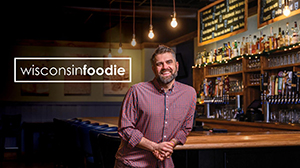
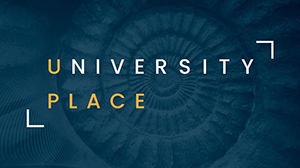

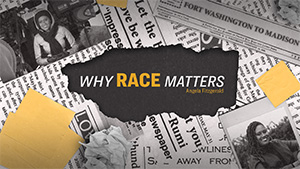
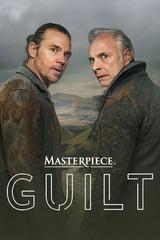



Follow Us